White nationalism rises nationwide; Calvin maintains anti-racist commitment
In 2015, students countered the hateful message by writing positive messages in the snow.
“Are there Nazis on my campus?”
In a 2015 public message via Facebook, President Le Roy noted that people were raising this question, among many others, in the anxious days following a November 22 incident on Calvin’s campus that had made national news. Two students had scrawled various obscenities and vulgarities in the light snow that had fallen on cars in the KHvR parking lot that evening. The most concerning among them were the words “white power,” and next to them a Nazi swastika.
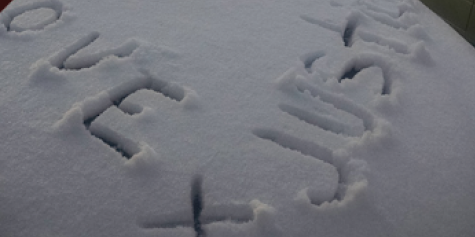
In 2015, students countered the hateful message by writing positive messages in the snow.
In the following days and weeks, many in Calvin’s community, from administration to students, called for the college to reassess its relationship with different forms of racism.
Calvin College continues to maintain a strongly-worded vision and policy regarding diversity and inclusion. The “From Every Nation” (FEN) document, adopted in 2003, outlines Calvin’s commitment to “[transform] Calvin into a college that is always vigilant in recognizing racism, always conscientious in promoting reconciliation, and always active in the work of restoring a healthy multicultural community.”
The document addresses Calvin’s lack of diversity in the past, saying, “Whether they were aware of it or not, the early builders of the Christian Reformed Church and Calvin College benefited from this racial differentiation, and in the process they inherited a national legacy of white privilege and the subjugation of people of color.” The document positions the college as explicitly “anti-racist.”
Dr. Sarah Visser, Vice President for Student Life, echoed this mission: “Calvin’s diversity and inclusion commitments stem from a dictate of biblical justice, which means that we don’t just stand for diversity and inclusion; we stand against racism.”
The prescience of the FEN document addresses a national trend. Alt-right and white nationalist ideologies continue to grow, at least in their efforts. The Anti Defamation League (ADL) reports a 182 percent increase in incidents involving the distribution of “racist, anti-semitic, and Islamaphobic fliers, stickers, banners and posters” in 2018.
Additionally, “white supremacists and other far-right extremists were responsible for 59 percent of all extremist-related fatalities in the U.S. in 2017, up dramatically from 20 percent in 2016.” The Southern Poverty Law Center has also reported that the number of white nationalist groups has grown from 100 chapters in 2017 to 148 chapters in 2018.
In a February 2019 report from the Leadership, Equity, Access, and Diversity Fund on Uncivil, Hate, and Bias incidents on campus, private institutions (half of which in the survey were religiously-affiliated) experienced such incidents on campus at similar rates as public schools.
Three-and-a-half years after the swastika incident, it remains to be seen how this upsurge in white nationalism and the alt-right has affected Calvin College in particular.
The question is a difficult one to answer, because encounters with white nationalist ideologies on campus are scattered and inconclusive. As Visser noted, “Incidents of this sort are difficult to track and measure because we are only aware of what comes to our attention.” No empirical data exists about the belief systems students hold about race at Calvin, and the number of incidents that are officially reported is lower than those that actually occur.
In addition, alt-right communities tend to thrive not in outward, public expression of their beliefs, but in secretive online enclaves where ideas, concepts and memes are interchanged in relative anonymity. Language and symbols of relating ideologies are largely unrecognizable to people unfamiliar with Nazi iconography, and so it is often possible to fly under the radar.
Visser spoke to community standards regarding dissenting political beliefs. Incidents tied to far-right ideology, including direct cases of harassment, are occuring on campus, but Visser made it clear that even if someone “[holds] a political belief that aligns with the alt-right… they cannot intimidate, harm, or disrespect another member of the Calvin community. This would be a violation of the biblical vision of shalom we’re attempting to cultivate on campus.”
In at least one instance, tensions on campus around politics and race have arisen in the classroom. This February, students in an Introduction to Film and Media class watched the film “BlacKkKlansman” (2018). The film, based on a true story of a black police detective who infiltrated the Ku Klux Klan in the 1970s, ends with documentary footage of the Charlottesville Unite the Right rally in 2017, an event largely organized and attended by white supremacist groups bearing Nazi and Confederate flags, firearms and anti-semitic paraphernalia. One of the concluding moments of the film shows the live footage of the violent murder of counter-protester Heather Heyer by automobile at that rally. The film dedicates itself to Heyer before fading to an image of an upside-down American flag, which slowly transitions from red, white and blue to black and white.
At this moment during the class’ screening, one student reportedly stood up from their seat and yelled “Trump 2020” before leaving the Bytwerk theater. Some students in the audience responded to the outburst with curses.
According to the Southern Poverty Law Center, “Trump is a hero to the alt-right.” Prominent white supremacist Richard Spencer, head of white nationalist group the National Policy Institute, and the person deemed responsible for coining the term “alternative right,” infamously ended a speech after Trump’s election with “Hail Trump, hail our people, hail victory!” Amidst cheers and applause, many in the audience gave a Nazi salute.
Visser spoke to the administrative response to incidents of harassment or discrimination. “When these situations and incidents arise, we work to respond faithfully. We investigate all reports that we’re made aware of … [the] primary mechanism through which reports come to the college is through the Safer Spaces process.” In terms of a growth in racist incidents, Visser stated, “When we look at the Safer Spaces data, the number of Safer Spaces reports that involve racist incidents are not more than in previous years.”
However, in campus climate surveys regarding harassment and discrimination, administered every other year, “we see that the number of incidents reported in the climate survey are higher than what is reported through Safer Spaces. This leads us to believe that there are more incidents occurring on campus than what are formally reported.” A similar trend occurs, Visser said, with sexual harassment and sexual assault.
Dr. Michelle Loyd-Paige, Executive Associate to the President for Diversity & Inclusion, provided Chimes with climate survey data to assess students’ experiences. While Calvin does not administer surveys related to belief systems about race, the current climate surveys ask student, faculty and staff respondents about their experiences with discrimination and harassment as well as general feelings toward the college.
According to the campus-wide Diversity Climate Survey in 2015, 15% of students of color responded “often” to whether they “felt discriminated against or harassed at Calvin” because of their race within the last year when the survey was administered. For the same question and response in 2017, this number dropped to 7%. Students of color who responded that they had “seldom” felt discriminated against or harassed at Calvin increased by 7%, from 22% in 2015 to 29% in 2017. Generally, this trends points to a decrease in cases of discrimination and harassment between 2015 and 2017. Another survey will be administered in Fall 2019.
Regardless of changes in the climate survey results, sophomore Lorrayya Williams said that on Calvin’s campus, “I definitely have experience with people defending white nationalists or espousing white nationalist ideas themselves.” She noted that such individuals do not necessarily claim the title of “white nationalist” but claim to simply be “conservative” or “alt-right.” Within her first week at Calvin, Williams said, she was discussing the Unite the Right rally with students who she identified as “defending the Unite the Right rally and that it really wasn’t about white supremacy, it was just about preserving culture.”
“There’s, like, two sorts of issues that Calvin has,” said Williams, one of which is that “there’s a lot of ignorant people … for some people I’m their first friend of color,” and so intercultural mistakes are common but not reason for offense.
“There’s also, I think, a part of Calvin that a lot of people don’t recognize that is just intentionally malicious. Like, they’ve been around people of color … and they don’t care,” said Williams. “I’ve had people tell me that my culture and my background and my race produces violence.”
Williams felt that Calvin’s Reformed mindset has overall been helpful in its approach to racism, and while she appreciates Calvin’s events concerning racism and intercultural dialogue, she also noted, “I feel like the people who are there … they’re the least problematic people … Those who are, like, really problematic,” that is, those who Williams identified as “intentionally malicious,” “they’re not going to show up.”
Dr. James Bratt is a professor emeritus of Calvin’s history department who has done extensive work on the history of the Dutch in America. He believes that aspects of Calvin’s Reformed mission means it has “really strong possible resources to bring to bear against [racism].” Bratt explained that Calvin faculty were some of the first to take on the issue of racism in Grand Rapids, as exemplified by a 1940 survey conducted by Calvin’s sociology department which profiled the discrimination against African-Americans.
As a teenager in 1967, Bratt remembered, Calvin faculty “were in front of the march” against Grand Rapids’ discriminatory housing policies. Bratt added that former college president William Spoelhof “got a lot of s— for” these actions from Calvin’s constituency, especially out of Chicago.
This does not mean Calvin has been exempt from racism. Bratt explained that racism at Calvin has often consisted of “unexamined assumptions about race” which shows itself as “polite, passive-aggressive … racism” rather than explicit white supremacist ideologies.
“I’d be surprised if there’s much of that [white nationalism] explicitly at Calvin,” he said.
Bratt explained that white nationalist ideologies are committed to nation before religion.
“My operating hypothesis would be that Calvin, at least in the dorms and so forth … is more plagued by the subliminal and unexamined assumptions,” he said.
Kasey Stevens, resident director of Noordewier-VanderWerp, spoke to his experience of this kind of racism at Calvin. Stevens sees the main issue of white supremacy on campus not being outright displays of white nationalist ideologies, but with “white normativity. Whiteness that is taken to be typical is also taken to be … ‘the best way’ to go about doing something.”
Stevens expressed that this mentality can extend from everything from songs of worship to dorm activities.
“My experience has not been of people that have said, like, ‘I’m white, therefore I am superior to you,’” said Stevens, “but my experience has been the activities, expressions, et cetera that are consistent with … whiteness” are placed in higher value and contrary ways of doing those things are considered of lesser value.
Stevens noted that these values can vary, but pointed to an example of how fashion staples of hip-hop culture, such as hoodies, Timberland boots and sagging pants used to be viewed as threatening, but “all of a sudden… [with] white students at Calvin, Timberlands are back in.” To Stevens, this indicates that “once whiteness has agreed that it’s acceptable, it’s no longer a deficiency, or something that’s concerning or alarming … but is rather just what’s normal and cool.”
Dr. Christina Edmondson, dean of intercultural student development, agreed that her department has felt the burden of the uptick in white nationalist and alt-right ideologies.
“It has impacted pedagogy and experiential learning techniques,” said Edmondson, as well as “our own level of fatigue.”
“We feel the pressure of the social moment,” she added, “and the hyper-polarization of the country that includes competing and contradictory ideas about racism.” Specifically, Edmondson acknowledged “we are well aware that there are students that come into this space … that would say they’re being propagandized” in regards to education on race and culture. Edmondson noted that some students come into the space “with their pre-made talking points about why it is that higher education itself has this so-called ‘liberal agenda.’ So there’s a hyper-vigilance [against] … [the idea of] white privilege.”
Edmondson said she and her colleagues have had to reexamine “white privilege” and other “common social science terms.” She stated that she had been having active conversations with faculty about using proper sociological terms in Christian contexts.
“If I talk about white privilege in some spaces,” said Edmondson, “I have students who are already coming having been told from their political and social construct to turn that completely off, to stop listening.”
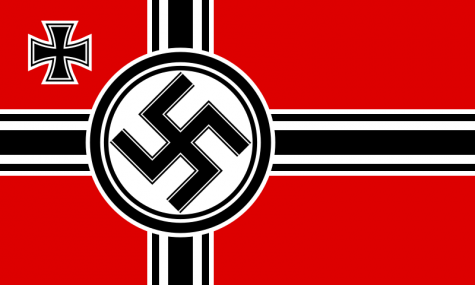
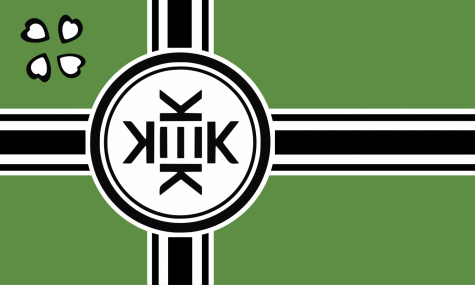
Although the mentality Edmondson described is in some ways more along the lines of an implicit bias, identifying whether white supremacy and white nationalism in their most explicit forms have a presence on campus is difficult because the alt-right largely thrives in secret on internet forums and social media, namely 4chan and Reddit. On white-nationalist sub-forums within these platforms, traditional icons of white nationalism, such as the swastika, are ironically subverted for new, less recognizable icons, such as the “Kekistan” flag, a symbol used by alt-right protesters at the aforementioned Charlottesville riots. According to the Southern Poverty Law Center, “the ‘national flag of Kekistan’ mimics a German Nazi war flag, with the Kek logo replacing the swastika and the green replacing the infamous German red… Alt-righters are particularly fond of the way the banner trolls liberals who recognize its origins.”
According to Calvin’s residence hall policies found in the Residence Hall Reference Guide, “inappropriate and/or offensive decorations, including … confederate flags, etc. may not
be displayed.” Yet, with the redesign of white nationalist paraphernalia, it is often easier for such material to be displayed without being recognized.
Chimes discovered at least one instance of a Kekistan flag on campus. In 2017, a group film project for Intro to Filmmaking shown in class contained footage in which a Kekistan flag was seen hanging from a bedpost in a dorm room. Upon being made aware of the icon’s origins, the students replaced the offending footage for the final cut of the project. The situation is an example of how hateful iconography can hide in plain sight, without being noticed.
Kasey Stevens explained his approach to dealing with displays that break Calvin’s policy.
“If there is paraphernalia that is associated with a message of movements that one might consider to be racist … or alt-right,” said Stevens, “my work involves helping students to identify their values [and] helping students to identify the impact that their values have on other people.”
Stevens elaborated on the ways in which he and his colleagues can approach challenging words or images that convey such ideas. The questions an RD could ask would be “What message are you trying to send? Like, what are you trying to say?”
Stevens endorsed a specific of theory of challenge and support. “What does it look like to enter a space where students are challenged to begin questioning things that they have unquestioned or historically believed to be true, and then also to support them?”
He added, “If you aren’t supportive enough in that process … people are gonna regress.”
Visser had this to say about students concerned about a white nationalist presence on campus: “I’d invite them into conversation so that I can learn more about their concern. I’d explore if the concern stems from something that is currently happening on campus or something that they believe could happen on campus. And I’d ask what would help them to feel confident that Calvin is working to live into the values and vision that we espouse.”
As Edmondson said, “Systemic racism … doesn’t rely on an intentional kind of Machiavellian racial supremacy plan … It just requires an autopilot in a structure and system that is already set up to hold the mythology of race.”
That mythology, says Edmondson, does not have to be the tenets of white nationalism. It could be the variety of west Michigan niceness that claims one doesn’t see race, or that someone can’t be racist because they are nice. According to Edmondson, “anti-racists,” the term the college has continually used to describe its position on racism, “resist racism.”
Resistance to racism starts inward. “[There are] two questions around race that I ask students to think about,” said Edmondson, “What is race, in and of itself? I mean, what is that? And how did you discover that you were in the race you are in?”
“We have work to do,” said Visser, “and I’d want [students concerned about white nationalism] to know that I’m personally and professionally committed to engaging this work with passion and conviction.”
As Visser noted, administration relies heavily on reports from the Safer Spaces policy in directly combatting discrimination and harassment on campus. If you feel you or someone you know has experienced discrimination, harassment or retaliation for reporting, you can file a Safer Spaces report at https://calvin.edu/offices-services/safer-spaces/report/.




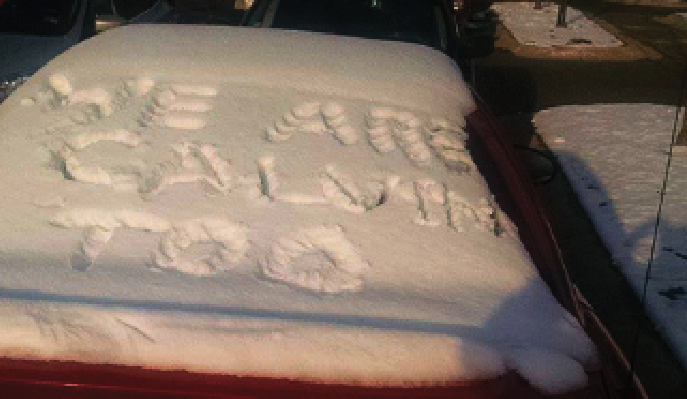
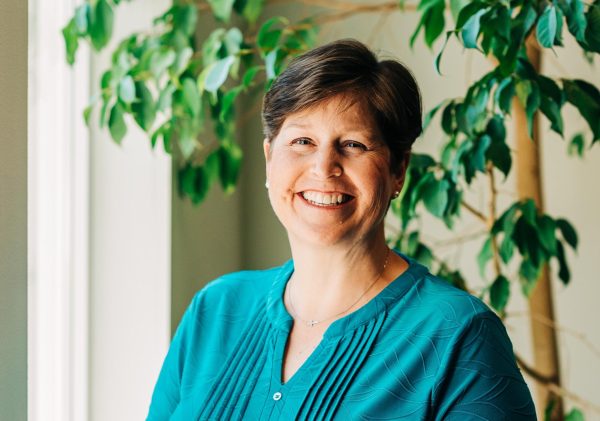
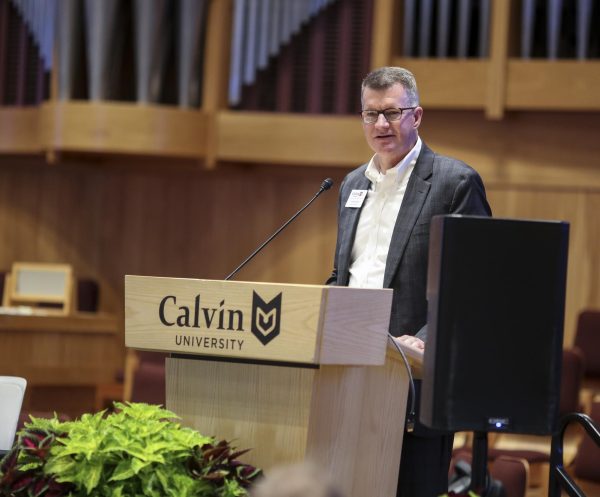
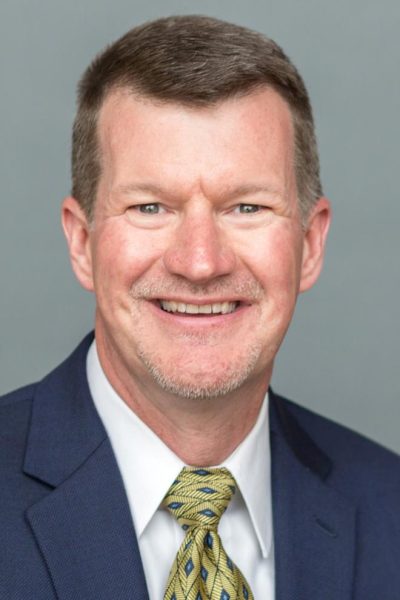
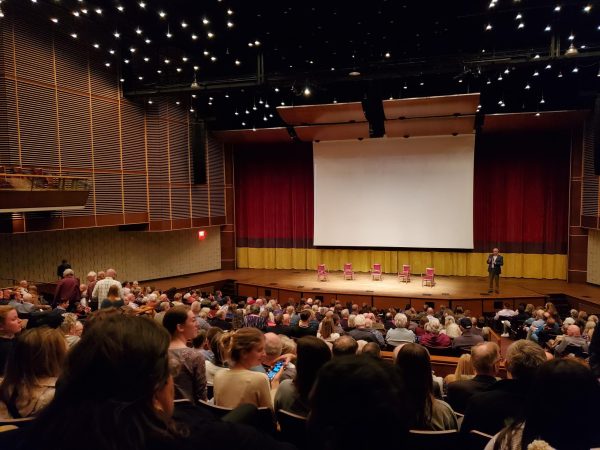
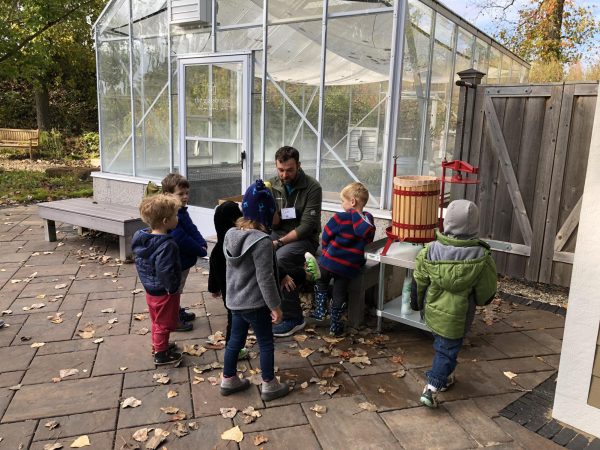


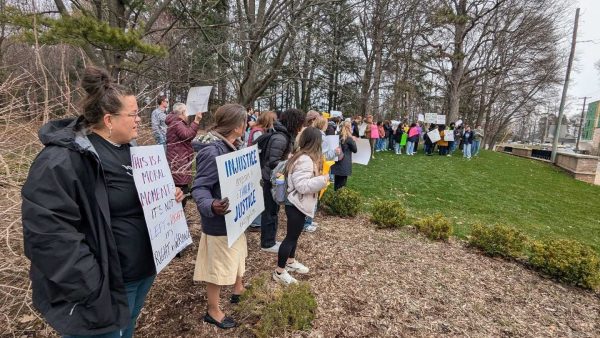
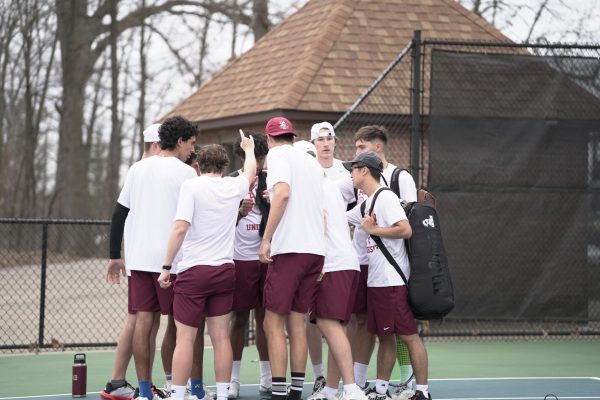
Daniel Stubbs • May 7, 2019 at 5:40 pm
Regarding Billy Koster above, I am flattered that you took the time to secretly investigate me. However, I am disappointed in your findings, a true investigator would have checked his sources before making such sweeping claims about me. You must have been swept away in the twitter torrent of 2018 as well to believe the disgusting and unfounded accusations made toward Navy Seal, War Veteran and seated Congressman Dan Crenshaw. Additionally, if you had paid close attention to the sources I get some of my online media content from while you were trolling my social media you would have realized that PragerU and Turning Point are my mediums of choice. Lastly, if the article was so even handed, why did you not just state your opinion about it instead of trying to deviously smear me. Your response in all reality reaffirms the “hyper polarization” I mentioned in my remarks above.
billy koster • May 5, 2019 at 1:45 am
regarding Dan Stubbs above, it’s real interesting that a guy who gets all his news from Breitbart and noted white supremacist Dan Crenshaw would have a problem with an even-handed article even-handedly discussing the rhetoric and iconography of white nationalism and immediately try to turn it into a republicans vs democrats thing.
Daniel Stubbs • May 3, 2019 at 7:30 pm
There is a lot of conjecture in this article, what is its true intended purpose I wonder? Is it to call out the origins of the KKK and it’s affiliation with the democratic party? Or is it a vailed attempt to mark conservatives as racists? Whatever it may be this is very emotionally charged piece lacking substance. The tone of the article raises acussation and does not encourage dialogue in any way. The article cites concerns about “Hyper polarization”, though the article encourages just that on Calvin’s campus.